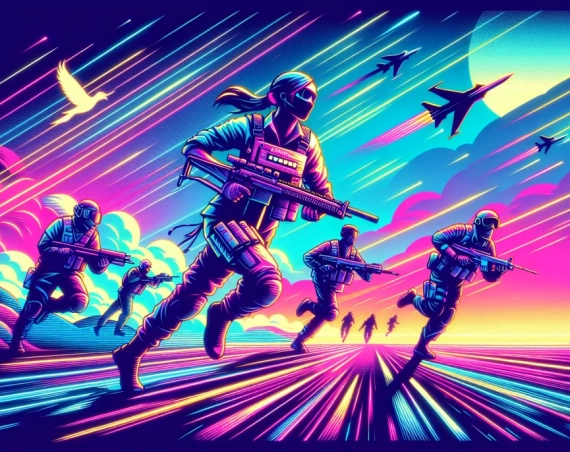
Why Marvel Zombies Shows the MCU Should Emulate DC’s Animation Success
The release of Marvel Zombies on Disney+ alongside series like Eyes of Wakanda underscores a pressing issue: Marvel’s current animation strategy within the MCU lacks consistency and sustained success. While Marvel’s Marvel Studios Animation has delivered intriguing content, it pales in comparison to the steady and acclaimed output from DC’s animated division. For the MCU to strengthen its foothold in animation, it would be wise to consider the lessons from DC’s long-standing success in the format.
The Current State of Marvel Studios Animation
Marvel has produced noteworthy animated projects, including the episodic What If…? seasons and series like X-Men ’97 and Your Friendly Neighborhood Spider-Man. However, these efforts have been sporadic and often suffer from unpredictable release schedules and behind-the-scenes instability—such as the unknown release dates for sequels and the firing of key creative leads. This erratic output contributes to a lack of sustained momentum and fan engagement.
- Marvel Zombies continues the story introduced in What If…? with a mix of dark themes and graphic content, appealing to a niche audience.
- Eyes of Wakanda showcases strong storytelling and animation but was released as a short four-episode series with shifting release dates, diluting viewer interest.
- X-Men ’97 revitalized fan enthusiasm but still lacks a firm schedule for upcoming seasons amid creative turmoil.
These factors, coupled with the fact that none of Marvel’s animated shows have appeared on Nielsen’s Top 10 streaming charts, suggest that Marvel Studios Animation struggles to capture a broad audience despite Disney’s global platform. Independent analysis emphasizes that audience retention often correlates strongly with consistent content release and coherent marketing, areas where Marvel’s animation arm could significantly improve.
DC’s Proven Model: Steady, Quality, and Classic Adaptations
In contrast, DC’s animated direct-to-video program has thrived for nearly two decades by consistently delivering three to four high-quality movies annually. These adaptations predominantly include celebrated comic storylines like Watchmen, Batman: The Long Halloween, and The Dark Knight Returns, which have cultivated a dedicated fanbase and critical acclaim alike.
Key factors in DC’s success:
- Regular and frequent releases: DC ensures there is a steady stream of content, keeping fans engaged year-round.
- Adaptations of iconic comics: Leveraging recognized and beloved stories creates built-in interest and credibility.
- Low-pressure viewing experience: DC’s animated movies are casually enjoyable without the constraint of serialized appointment viewing, making them more accessible.
This approach not only drives viewer engagement but also reduces the pressure on any single film to perform exceptionally, allowing a consistent pipeline of content to build long-term viewership and brand loyalty. According to industry reports, steady content cadence increases subscriber retention rates by approximately 20%-30% on streaming platforms (Source: Parrot Analytics).
Historical Context: Marvel’s Early Animated Efforts
Marvel itself has experienced success in direct-to-video animated movies before, producing eight such films from 2006 to 2011. Titles like Ultimate Avengers and Planet Hulk generally performed well financially, despite mixed critical reviews. However, the rise of the MCU’s live-action dominance caused Marvel’s animated projects to fall by the wayside.
As streaming platforms continue to evolve, seeing a resurgence of interest in adult and mature animated content, there stands a unique opportunity for Marvel to revive the direct-to-video or direct-to-streaming movie model, but with the advantage of ongoing MCU popularity.
Strategic Recommendations for Marvel Studios Animation
Given the current landscape, Marvel could benefit from adopting a strategy similar to DC’s, emphasizing:
- Consistent release schedules: Offering three to four animated movies or specials annually to maintain steady viewer interest.
- Classic comic adaptations: Leveraging rich Marvel storylines such as Kraven’s Last Hunt, Demon in a Bottle, Infinity Gauntlet, and the Winter Soldier arc, which remain highly revered and underexplored in animation.
- Balancing original and adaptation content: Mixing original stories like Marvel Zombies and Eyes of Wakanda with faithful adaptations to satisfy both niche and mainstream audiences.
- Flexible viewing experiences: Prioritizing direct-to-streaming movie formats rather than serialized appointment viewing, which can reduce viewer frustration over scheduling changes and binge-pressure.
By restructuring its animated content pipeline, Marvel Studios Animation can maximize both fan engagement and creative freedom while reducing overhead costs associated with inconsistent episodic releases.
Conclusion
Marvel Zombies and other recent animated projects reveal a broader issue in Marvel Studios Animation’s strategy — one marked by unpredictability and missed opportunities. Emulating DC’s steady, classic adaptation approach could revitalize Marvel’s animation sector and expand its influence beyond live-action. With a rich archive of storylines yet to be animated and a passionate fanbase eager for quality content, the path forward is clear: establish regular, high-quality animated movies rooted in Marvel’s iconic comics.
As the animation landscape grows increasingly competitive and lucrative, adopting this tested model will ensure Marvel’s animated future is as bright and impactful as its blockbuster MCU films.


